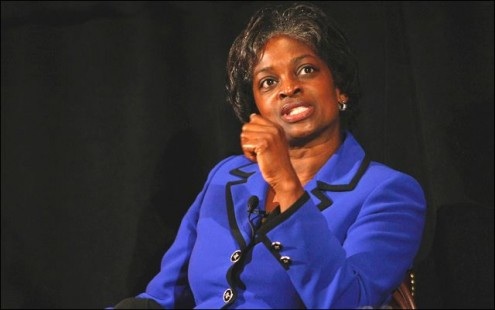Online video continues gains in latest Video Competition Report; OTA viewing remains steady
Among a hodgepodge of information about the state of video competition in America, the FCC’s new 15th annual report finds cable’s share of subscribers is falling, satellite and telco are gaining, OTA broadcasting is holding steady and online video viewing is soaring. The report on video competition in America also shows the steady migration among consumers toward online video viewing.
“Viewing of OVDs’ (online video distributors) video programming on television sets is becoming increasingly prevalent,” the report said. “For example, one source, SNL Kagan, estimated by the end of 2012 the number of Internet-connected television households (i.e., accessed via an Internet-enabled game console, OVD set- top box, television set or Blu-ray player) would have grown to 41.6 million, or 35.4 percent of all television households.”
Among multichannel video programming distributors (MVPD), subscribers grew from 100.8 million to 101.0 million households between year-end 2010 and June 2012. However, during this period, cable’s share of MVPD subscribers fell from 59.3 percent of all MVPD video subscribers at the end of 2011 to 55.7 percent at the end of June 2012.
Between year-end 2010 and June 2012, direct broadcast satellite (DBS) and telco providers gained both video subscribers and market share.
OTA broadcasting television broadcasting remained pretty much unchanged. “Since the last report, the number of households relying exclusively on over-the-air broadcast service has remained steady at approximately 11.1 million households, although the percentage of all households they represent increased slightly from 9.6 percent in 2011 to 9.7 percent in 2012,” the report said.
The report said that in addition to HD content, broadcasters are using multicasting to bring more programming to consumers by expanding the availability of established networks and adding new startup digital networks (including networks targeting minorities and programming targeting niche audiences) and Spanish language offerings. “As of the end of 2011, 1501 (82.2 percent) of full-power stations were broadcasting in HD, up from 1036 stations in 2010,” the report found.
However, the significant change comes in the adoption of online video. “OVDs continue to expand the amount of video content available to consumers through original programming and new licensing agreements with traditional content creators,” the report said. “A few MVPDs now offer OVD services to nonsubscribers. Some OVDs have invested in their own servers, content delivery networks and other infrastructure to facilitate the delivery of video programming.”
Get the TV Tech Newsletter
The professional video industry's #1 source for news, trends and product and tech information. Sign up below.
The report also said that several technology companies, notably Amazon, Apple, Google and Microsoft, are delivering end-to-end systems of Internet infrastructure, software, devices and video programming. Viewing of OVDs’ video programming on television sets, the report found, is becoming increasingly prevalent.
OVDs account for an increasing portion of Internet traffic during peak hours. The report found that during the first half of 2012, most major cable multiple system operators (“MSOs”) formalized bandwidth caps or usage-based/metered pricing. Several telephone company MVPDs also are implementing bandwidth caps and usage fees. This could be a problem area for the FCC in the future as the carriers continue to block bandwidth.

Another potential problem involves rural areas. The report said television markets containing rural populations tend to have fewer local full-power stations than those comprised of urban areas. Consumers in smaller markets may also rely more on multicasting than those in large markets for the delivery of major network programming such as that of ABC, CBS, FOX and NBC.
As of November 2012, 49 of the 210 television markets had three or fewer full-power commercial broadcast stations assigned to them. All of these markets are ranked below 100. Combined, all 49 markets with three or fewer stations represent about 4.57 million television households, or 4 percent of the estimated 114.2 television households nationwide as of the 2012-13 television season.
The report noted that consumers need high-speed Internet access in order to have access to OVDs’ video content. “Unfortunately, many consumers in rural America lack access to this important resource. The Commission’s 2012 Rural Broadband Report found that 76.2 percent of the 19 million Americans that still lack access to 3Mbps/768kbps or faster of fixed broadband service live in rural areas, even though only 24 percent of all Americans reside in rural areas.”
Close to 3 out of 10 rural Americans — 28.2 percent — are without access to fixed broadband at 3Mbps/768kbps or faster, which is nine times larger than the 3 percent of Americans without access in nonrural areas, the report found. Additional data further indicates that rural consumers have fewer options with respect to broadband technologies and providers than other consumers.
Acting FCC chairwoman Mignon Clyburn expressed dismay over the rural findings. “I am concerned because not all of our citizens are realizing the promise of these competitive benefits,” she said. “Nearly 3 out of 10 rural Americans do not have access to high-speed Internet that is sufficient to receive online video distributors’ services, and I sincerely hope that these consumers are not forgotten as these services become more popular and offer more extensive programming.”
